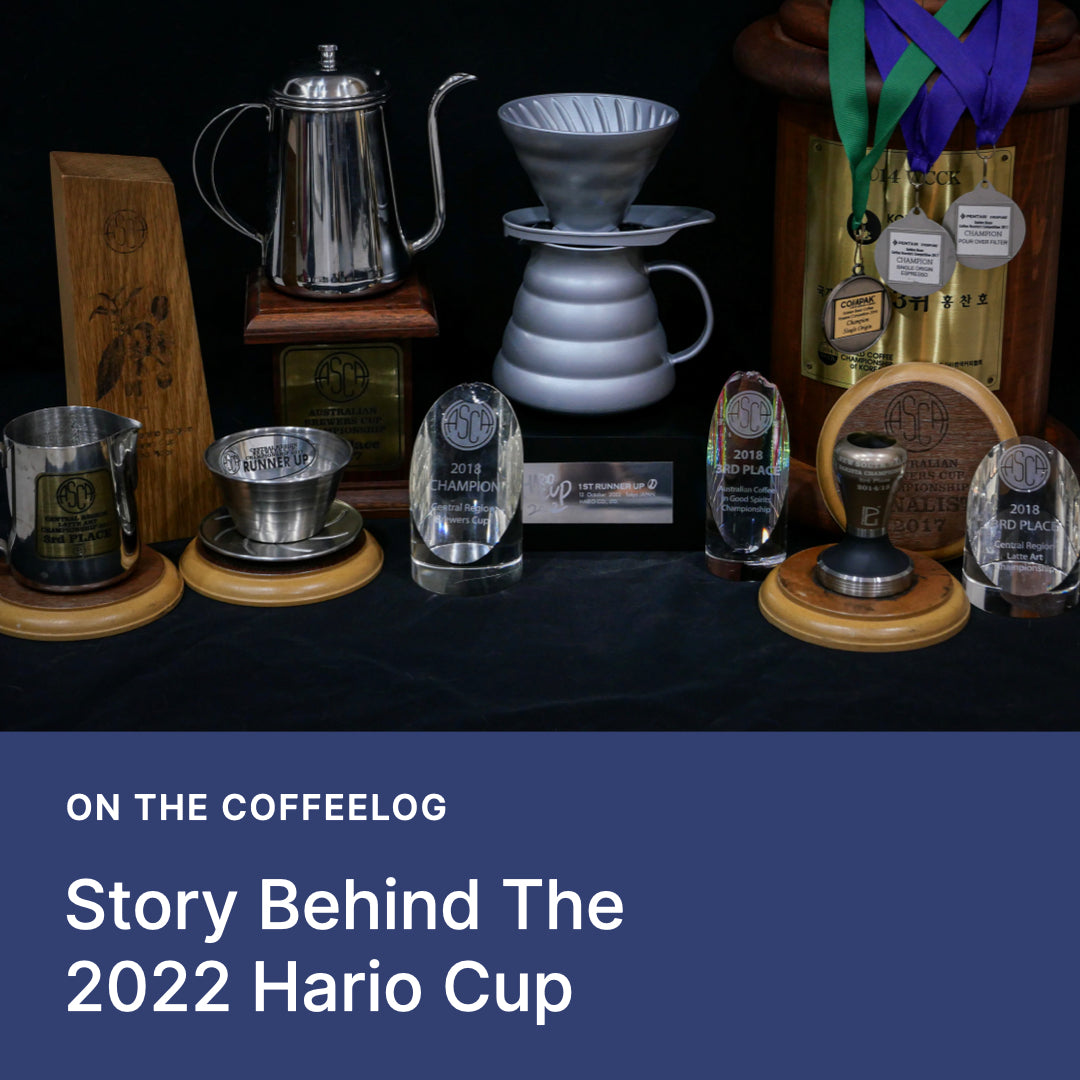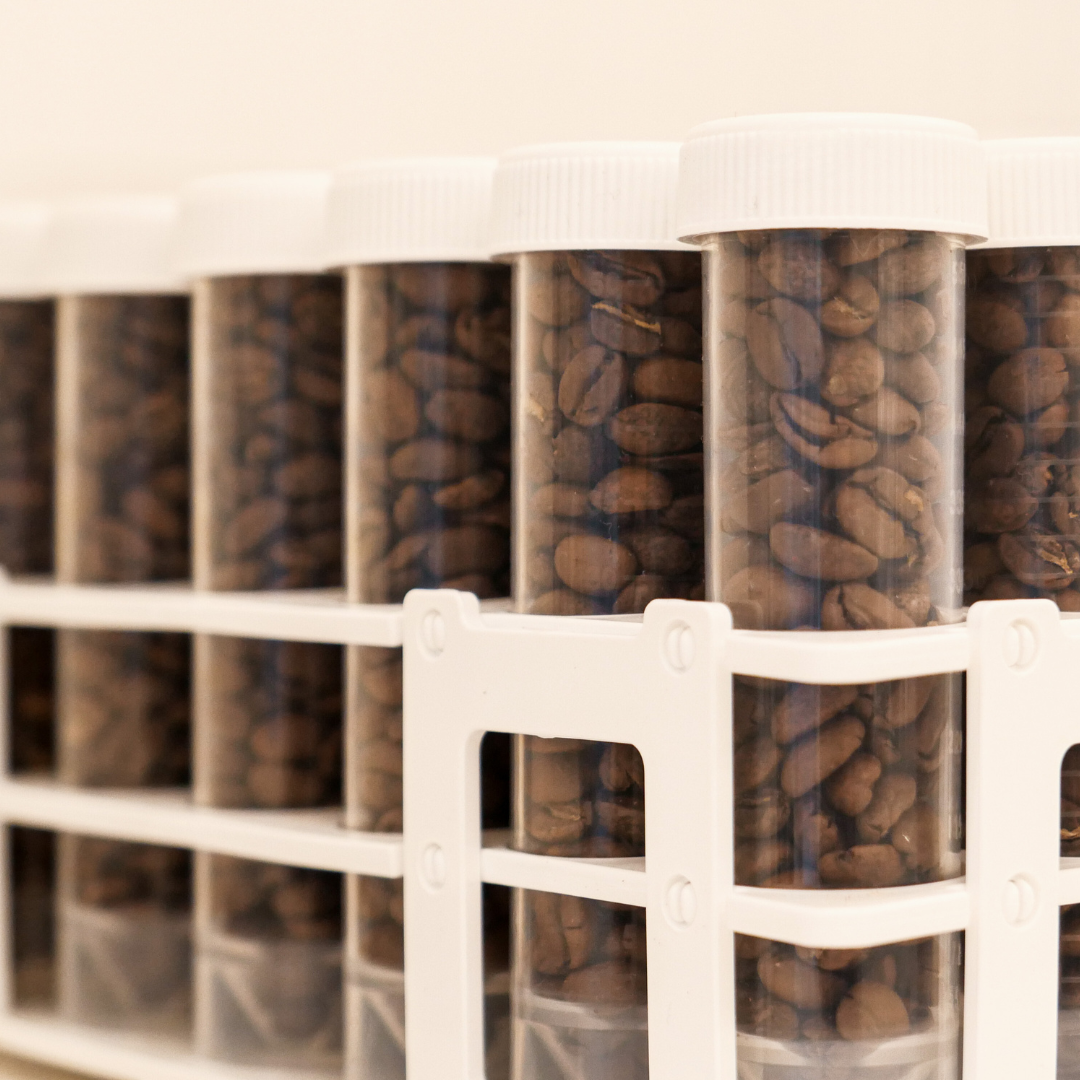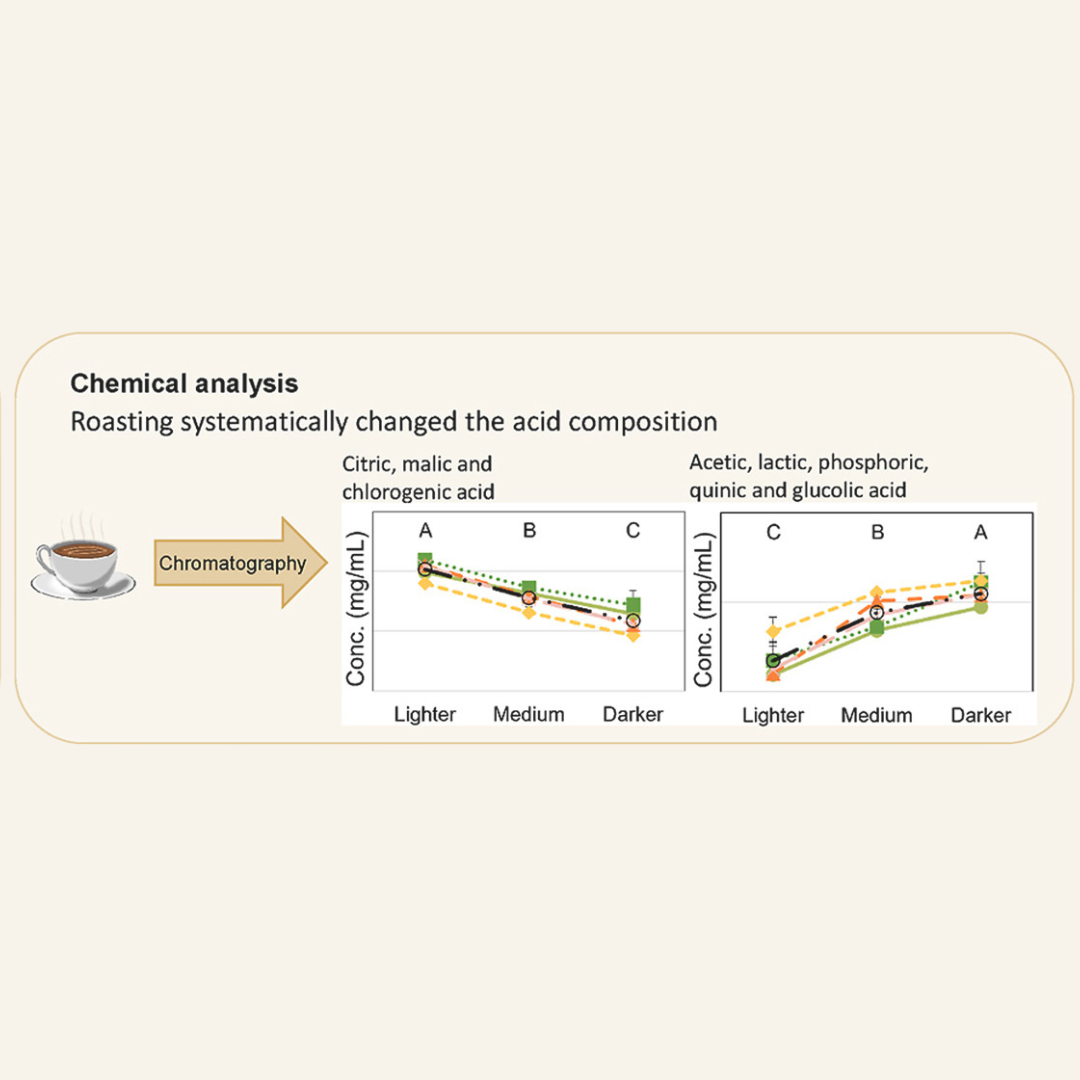As you may have heard, the managing director, Chanho (myself), recently competed in the 2022 Hario Cup, an international coffee brewing competition, and was crowned the 1st Runner-Up. (Yay! Thanks, heaps!) So here is a brief behind the story.
What is Hario Cup, and how did I prepare?
Early this year, I was told that there would be an international brewing competition in Japan during the SCAJ (Specialty Coffee Association of Japan) exhibition. And this competition is hosted by Hario International, as it's their 100th anniversary.
The structure of the competition was very interesting. Four judges evaluate the final cup quality and Q&A with the competitor. Within 10 minutes, competitors should brew and serve 4 cups of the same coffee to each judge and should answer the questions the judges ask. Competitors are chosen by Hario and are national champions or finalists who used Hario products in their Brewers Cup competitions.
As no proper presentation was required, it was not easy to prepare for the competition. No specific scoresheet and no marking criteria are given. So, I aimed to brew the coffee the same way we do in Normcore Coffee. Instead of practising new methods, the same Chanho-Tornado method is used, but the details are adjusted. I grabbed some bags from the North Rocks roastery and came to Japan to compete.
Coffee
The coffee I selected was Double Anaerobic Natural Sidra from El Diviso of Colombia, which is one of our single origins currently being sold as a gold-label coffee. Not only its unique and complex flavours were the reason for the choice, but also, this coffee has a distinct quality that I can happily offer to people.
The coffee was roasted the same as our production profile. But I tried to give enough aging to it to achieve a smooth, syrupy texture.
Brewing Recipe Development
When I first got to taste my coffee in Japan, it tasted so bad, flat and dull. And I struggled to make it brewed with the pleasant intensity of flavours and mouthfeel. The reason why it happened was that the provided water was too soft. Usually, Sydney’s water is around 90-120 ppm of total hardness. But this time, the water in Japan was 24 ppm. Here the problem started.
The first approach to brew it better was trying different grind sizes. To increase the intensity, I tried grinding finer. And the result……..was……..bitter and low intensity. So, grinding finer was not the solution. Then, I tried to increase the temperature of the brew, and it didn’t work at all. After that, I tried most of the things I could try except changing the brewing device.
But what was the solution in the end? I ended up with a shorter brew ratio than usual with a slightly finer grinding size. I achieved the right intensity by grinding the beans finer and prevented bitterness and astringency with good taste balance and right intensity by shortened brew ratio. Thus, the final recipe was changed from the original one (15:240, 1:30) to the new one (15:225, 1:45) including the blooming from the original one (45g, 30sec) to the new one (45g, 40sec).




Comment
Amazing story! Please put a poster up with pictures and photos in the shop so people can read it while waiting!